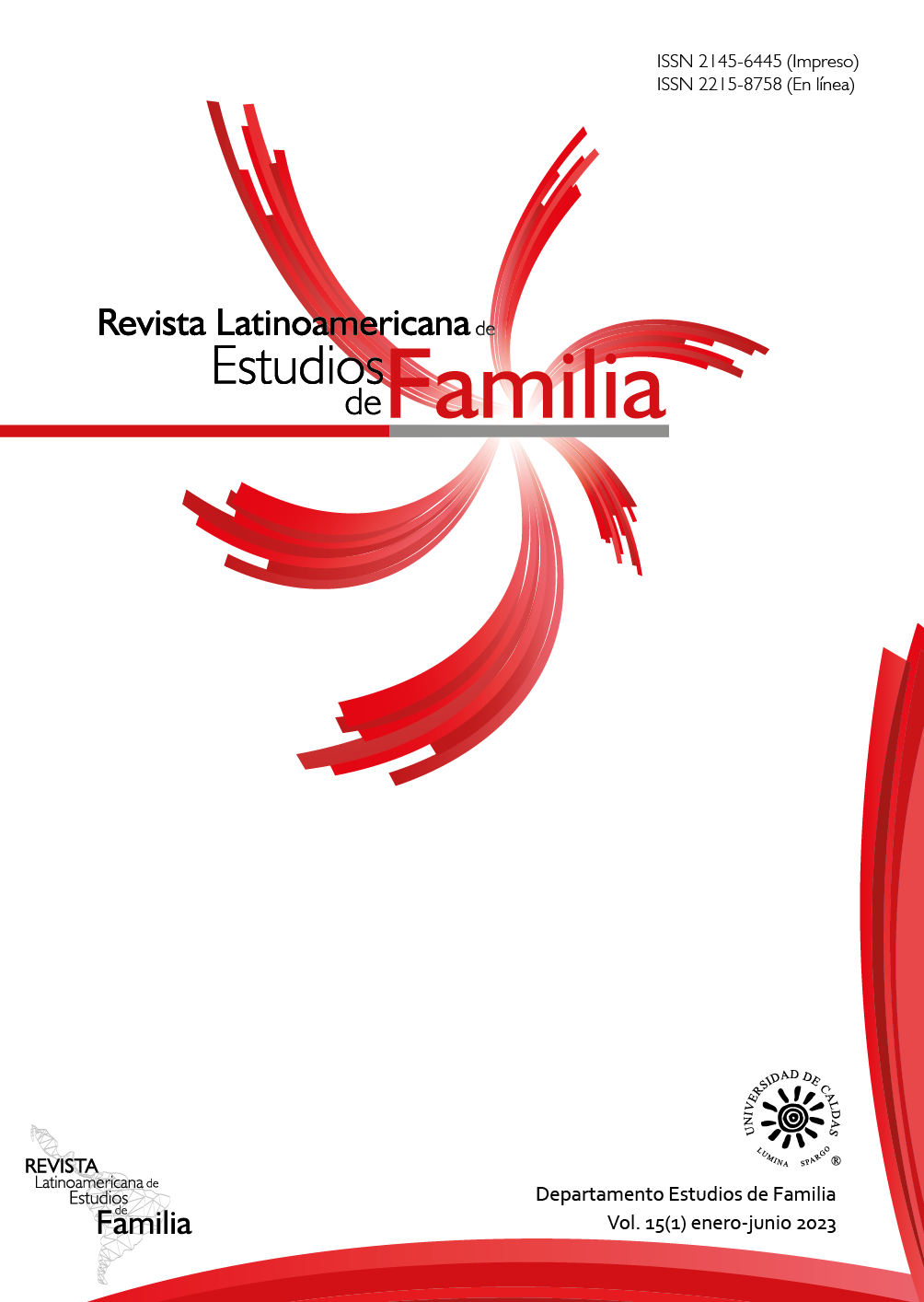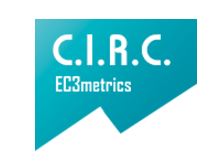Authors
Abstract
Abstract. Objective: The purpose of this study was to analyze the perception that adolescents have regarding gender stereotypes that were transmitted to them through maternal parenting. A scale was built and validated to achieve this purpose. Method: The sample consisted of 305 adolescents residents of the Toluca Valley, with an average age of 17 years, 50.26 % male and 49.83 % female. A non-probabilistic sample of the intentional type was applied. Data processing was carried out using internal consistency analysis (Cronbach’s Alpha) and principal components factor analysis with Varimax-type rotation. Subsequently, the Student’s t- test was used to compare the median of the factors based on gender, type of family (single parent and biparental). To examine the differences in the scale factors regarding the schooling of the mothers of the adolescents, the one-way analysis of variance test (ANOVA) and the Scheffé post-hoc test was used. Results: The original scale consisted of 50 items, eight of which were eliminated keeping 42 with Liker-type response options. Regarding the median comparison, it was found that the stereotypes transmitted by the mothers are present to a greater extent in the expression of affects factor. Statistically, significant differences were also identified between the factors of the scale regarding gender, schooling, and family to which the adolescents belong to, as well as the schooling of their mothers. Conclusions: The scale obtained satisfactory psychometric characteristics. It was made up of five factors: employment and educational opportunities, domestic and parenting tasks, exercise of sexuality, expression of affection, and stereotyped social behavior which, according to conceptual clarity and variance breakpoint, explain 46.07% of the construct.
Keywords
References
Armas, A. (2015). Percepción de los/las adolescentes sobre los estereotipos de género (tesis). Universidad de la Laguna, Tenerife, España. https://bit.ly/3Mvx6F6
Barberá, E. (2004). Perspectiva cognitiva-social: estereotipos y esquemas de género. En E. Barberá y I. Martínez (Eds.), Psicología y género (pp. 55-80). https://bit.ly/3oDPTX1
Barquet, M. (2002). Reflexiones sobre teorías de género, hoy. Umbrales, (11).
Calvete, E., Gámez Guadix. M. y Orue, I. (2010). El inventario de Dimensiones de Disciplina (DDI), Versión Niños y adolescentes: Estudio de las prácticas de disciplina parental desde una perspectiva de género. Anales de Psicología, 26(2), 410-418. https://revistas.um.es/analesps/article/view/109421
Cantón-Cortés, D., Ramírez, M. A. y Cantón, J. (2014). Papel moderador del sexo en las prácticas de crianza. International Journal of Developmental and Educational Psychology, INFAD Revista de Psicología, 1(1), 275-284. https://revista.infad.eu/index.php/IJODAEP/article/view/373
Castillo-Mayén, M. R. y Montes-Berges, B. (2014). Analysis of current gender stereotypes. Anales de Psicología, 30(3), 1044-1060. https://doi.org/10.6018/analesps.30.3.138981
Cohen, J. (1988). Statistical power analysis for the behavioral sciences (2nd ed.). Erlbaum.
Colás, P. y Villaciervos, P. (2007). La interiorización de los estereotipos de género en jóvenes y adolescentes. Revista de Investigación Educativa, 25(1), 35-58. https://bit.ly/43b31C6
Cubillas, M. J., Valdez, E. A., Domínguez, S. E., Román, R., Hernández, A. y Zapata J. (2016). Creencias sobre estereotipos de género de jóvenes universitarios del norte de México. Revista Diversitas. Perspectivas en Psicología, 12(2), 217-230. https://bit.ly/3IKF3p6
De Lemus, S., Castillo, M., Moya, M., Padilla, J. L. y Ryan, E. (2008). Elaboración y validación del inventario de sexismo ambivalente para adolescentes. International Journal of Clinical and Health Psychology, 8(2), 537-562. https://www.redalyc.org/pdf/337/33712001013.pdf
Del Barrio, V. y Carrasco, M. A. (2004). CDI: Inventario de Depresión Infantil. TEA Ediciones.
Delpino, M. y Eresta, M. (2013). Relaciones afectivas y sexualidad en la adolescencia. Ministerio de Sanidad, Servicios Sociales e Igualdad.
Díaz-Loving, R., Rocha, T. y Rivera, S. (2007). La instrumentalidad y expresividad desde una perspectiva psico-socio-cultural. Porrúa.
Fisas, V. (2001). El sexo de la violencia, género y cultura de la violencia. Icaria S. A.
Flores, M., Cortés, M. L., Gonzales, J., García, M., Oudhof., H. J., Frías, M., Lozano, G. y Zavala, J. (2016). Una aproximación a la medición de la percepción de prácticas de crianza para adolescentes. Psicumex, 6(1), 62-82. https://doi.org/10.36793/psicumex.v6i1.258
Flores, M. M., Cortés, M. L. y Góngora, E. A. (2008). Familia, crianza y personalidad: Una perspectiva etnopsicológica. Universidad Autónoma de Yucatán. https://bit.ly/43wIVCa
Freixas, F. (2012). La adquisición del género: el lugar de la educación en el desarrollo de la identidad sexual. Apuntes de Psicología, 30(1-3), 155-164. https://bit.ly/3IM0ztE
Fuentes, M. J., Motrico, E. y Bersabé, R. M. (2001). Diferencias entre padres y adolescentes en la percepción del estilo educativo parental: afecto y normas-exigencias. Apuntes de Psicología, 19(2), 235-249. https://bit.ly/3qe8mKi
Heilman, M. (2015). Gender stereotypes: Impediments to women’s career progress. In I. Welpe, P. Brosi, L. Ritzehöfer & T. Schwarzmüller (eds.), Auswhal von Männern und Frauen als Führungskräfte. Perspektiven aus Wirtschaft (pp. 73-84). Medien und Politik. https://doi.org/10-1007/978-3-658-09469-0_1-
Hernández, C. A. (2019). Los jóvenes mexicanos y sus construcciones relacionadas con los roles de género. Acta Universitaria, 29.
Instituto Mexicano para la Competitividad. (2021). Índice de competitividad internacional 2021. IMCO. https://bit.ly/3q6Ddbs
Instituto Nacional de Estadística y Geografía (INEGI). (2018). Estadísticas a propósito del día de la madre (10 de mayo). INEGI. https://bit.ly/3MxYpyK
Instituto Nacional de Estadística y Geografía (INEGI) e Instituto Nacional de las Mujeres (Inmujeres). (2020). Mujeres y hombres en México 2020. INEGI. https://bit.ly/425e52c
Instituto Nacional de las Mujeres (Inmujeres). (2017). Encuesta Nacional sobre la Dinámica de las Relaciones en los Hogares 2016. Inmujeres.
Maccoby, S. y Jacklin, C. (1974). Psychology of sex differences. Stanford University Press.
Megías, I. (2003). Comunicación y conflicto entre hijos y padres. Fundación de Ayuda contra la Drogadicción (FAD). https://bit.ly/3MFGztA
Meunier, J. C. & Roskam, I. (2009). Validation of the Preschool and Primary School Form of a Questionnaire Assessing Parents’ Childrearing. Behavior Journal of Clinical Child y Adolescent Psychology, 38(1), 166-175. https://doi.org/10.1080/15374410802575370
Miller, D. I., Eagly, A. H. y Linn, M. C. (2015). Women’s Representation in Science Predicts National Gender-Science. Stereotypes: Evidence From 66 Nations. Journal of Educational Psychology, 107(3), 63-644. https://doi.org/10.1037/edu0000005
Monreal, M. C. y Martínez, B. (2010). Esquemas de género y desigualdades sociales. En L. Amador y M. Monreal (eds.), Intervención social y género (pp.73-94). Narcea.
Moon, M. & Hoffman, C. D. (2008). Mothers’ and fathers’ differential expectancies and behaviors: Parent x child gender effects. The Journal of Genetic Psychology, 164, 261-279. https://doi.org/10.3200/GNTP.169.3.261-280
Mosteiro, M. J. y Porto, A. M. (2017). Análisis de los estereotipos de género en alumnado de formación profesional: diferencias según sexo, edad y grado. Revista de Investigación Educativa, 35(1), 151-165. https://doi.org/10.6018/rie.35.1.257191
Perry, D. y Pauletti, R. (2011). Gender and adolescent development. Journal of Research on Adolescence,21(1), 61-74. https://doi.org/10.1111/j.1532-7795.2010.00715.x
Poblete, R. (2011). Género y Educación: trayectorias de vida para ellos y ellas. Revista Latinoamericana de Educación Inclusiva, 5(1), 63-77. http://www.rinace.net/rlei/numeros/vol5-num1/art4.html
Porto, A. M., Cajide, J., Mosteiro, M. J., Castro, M. D., Sierra, S. y Rodríguez Burgos, S. (2012). Estereotipos de género ante la Ciencia y la Tecnología del alumnado de Formación Profesional. Actas del IX Congreso Iberoamericano de Ciencia, Tecnología y Género, 1-13.
Roa, L. y del Barrio, V. (2001). Adaptación del cuestionario de crianza parental (PCRI-A Gerard, 1994) a la población española. Revista Latinoamericana de Psicología, 33(3), 329-341. https://www.redalyc.org/pdf/805/80533307.pdf
Roa,L. y del Barrio, V.(2002).Cuestionario de percepción de la crianza para niños y adolescentes. Psicología Educativa, 8(1), 37–51. https://scholar.google.com/scholar_lookup?title=Cuestionario+de+percepci%C3%B3n+de+la+crianza+para+ni%C3%B1os+y+adolescentes&author=Roa+L.&author=del+Barrio+V.&publication_year=2002&journal=Psicolog%C3%ADa+Educativa&volume=8&issue=1&pages=37-51
Rocha, T. E y Díaz-Loving, R. (2005). Cultura de género: la brecha ideológica entre hombres y mujeres. Anales de Psicología, 21(1), 42-49. https://revistas.um.es/analesps/article/view/27111 Rodríguez, B., Oudhof, H., González Arratia, N. I. y Unikel, C. (2011). Desarrollo de una escala para medir la percepción de la crianza parental en jóvenes estudiantes mexicanos, Pensamiento Psicológico, 9(17), 9-20. https://www.redalyc.org/pdf/801/80122596001.pdf
Rosenkrantz, P., Vogel, S., Bee, H., Broverman, I. & Broverman, D. M. (1968). Sex-Role stereotypes and self-concepts in college students. Journal of Consulting and Clinical Psychology, 32(3), 287-295. https://doi.org/10.1037/h0025909
Ruiz Palomino, E., Ballester Arnal, R., Gil Llario, M. D., Giménez García, C. y Salmerón, P. (2010). ¿Cambian los estereotipos de género a lo largo de la adolescencia? International Journal of Developmental and Educational Psychology, 1(2), 321-329. https://www.redalyc.org/pdf/3498/349832325032.pdf
Sánchez, M., Suárez, M., Manzano, N., Oliveros, L., Lozano, S., Fernández D’Andrea, B. y Malik, B. (2011). Estereotipos de género y valores sobre el trabajo entre los estudiantes españoles. Revista de Educación, 355, 331-354.
Serrano, A. C. y Marín, E. V. (2017). Estereotipos de género en adolescentes de la unidad educativa “Chordeleg” periodo 2016-2017. Revista Electrónica de Psicología Iztacala, 20(3), 105-129. http://revistas.unam.mx/index.php/repi/article/view/61778
Shek, D., Lee, T. Y. y Chan, L. K. (1998). Perceptions of parenting styles and parent-adolescent conflict in adolescents with low academic achievement in Hong Kong. Social Behavior and Personality, 26(1), 89-98. https://doi.org/10.2224/sbp.1998.26.1.89
Sierra-Bravo, R. (2001). Técnicas de investigación social. Teoría y ejercicios. Paraninfo S.A.
Sturge-Apple, M. L., Davies, P. T., Boker, S. M. & Cummings, E. M. (2004). Interparental discord and parenting: testing the moderating roles of child and parent gender. Parenting: Science and Practice, 4(4), 361-380.
Tenenbaum, H. y Leaper, C. (2002). Are parents gender schemas related to their children’s gender-related cognitions? A meta-analysis. Developmental Psychology, 38(4), 615-630. https://doi.org/10.1037/0012-1649.38.4.615
Villegas-Pantoja, M. A., Alonso-Castillo, M. M., Alonso-Castillo, B. A y Martínez-Maldonado, R. (2014). Percepción de crianza parental y su relación con el inicio del consumo de drogas en adolescentes mexicanos. Aquichan, 14(1), 41-52. https://bit.ly/3ox16st
Williams, J. E. y Best, D. L. (1990). Measuring sex stereotypes: A multi-nation study. Sage.

 PDF (Español)
PDF (Español)
 FLIP
FLIP

























